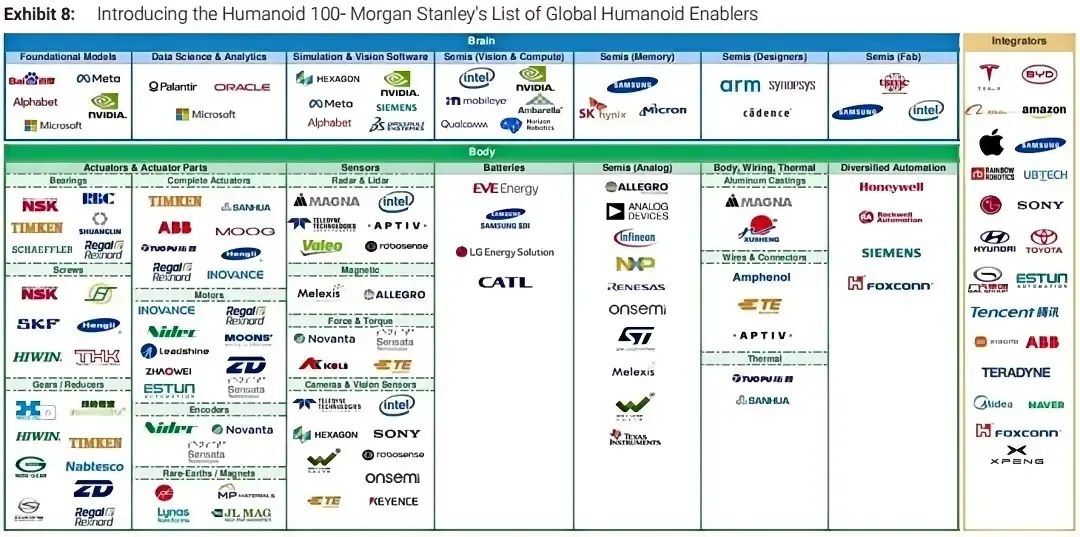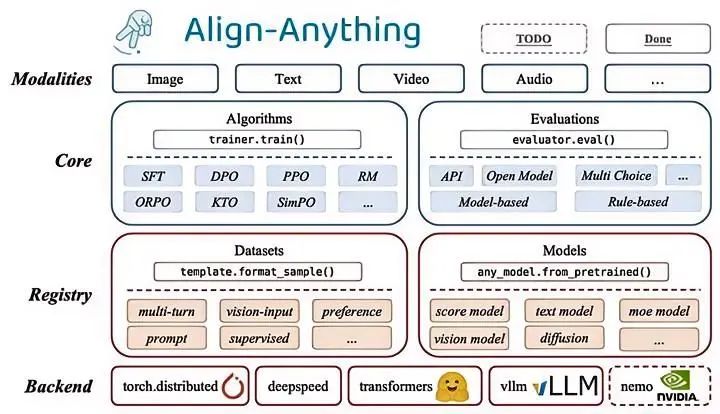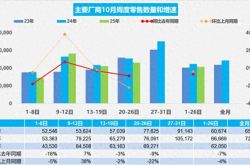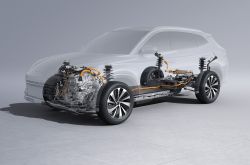Humanoid Robot Industry: From Behind to the Forefront, Riding the DeepSeek Edge-side Model Wave
![]() 02/28 2025
02/28 2025
![]() 653
653
Last week, DeepSeek unveiled a technical paper on NSA, a hardware-aligned and natively trainable sparse attention mechanism tailored for ultra-fast long-context training and inference. DeepSeek asserts that this mechanism optimizes modern hardware design, accelerating inference while reducing pre-training costs without compromising performance.
The synergistic evolution of DeepSeek and hardware advancements, driving equipment upgrades and market growth, is pivotal to the next phase of the physical industry's development post the capital market boom. This is evident from the technological strides made in various terminal hardware. Terminal devices are undergoing a fresh wave of upgrades and iterations, with close collaboration between hardware vendors and DeepSeek propelling these devices towards greater intelligence and efficiency.
Undoubtedly, robots represent the most technologically imaginative terminal hardware. This year, DeepSeek's cutting-edge AI inference model has ushered in innovations in high-quality small models and multimodal inference models, paving the way for robot commercial applications and terminal-side inference. These robust model capabilities have evolved to empower terminal-side hardware. Wang Xingxing, CEO of Unitree Robotics, recently predicted that by the end of this year, the entire AI humanoid robot industry will reach unprecedented scales.
Historically, the domestic humanoid robot industry chain has lagged behind, but this trend has reversed in recent years. Relying on profound technological accumulation and a robust supply chain system, domestic enterprises have achieved significant breakthroughs in traditional robot technology domains like joint servo and motion control. Subsequently, leveraging the AI wave, these enterprises have surged ahead, fueled by enhanced hardware technology maturity and model empowerment.
Morgan Stanley's latest report, "The Humanoid 100: Mapping the Humanoid Robot Value Chain," lists the top 100 listed companies in the global humanoid robot industry chain. Notably, Asian companies account for 73%, with Chinese companies comprising 56%, and 77% of integrators hail from Asia, 45% of which are from China. In the past five years, China's humanoid robot patent applications have far surpassed those of the United States and Japan, totaling 5,688, ranking first globally. The report forecasts that by 2030, China's humanoid robot market size will reach RMB 12 billion, with sales touching 1.5 million units; by 2050, this market size is projected to surge to RMB 6 trillion, encompassing a total of 59 million humanoid robots.
Domestic Supply Chain in The Humanoid 100: Edge-side Intelligence Leading Robot Development
The report categorizes suppliers into three groups: "brain" suppliers focusing on semiconductors and model software, "body" suppliers responsible for industrial components, and "integrators" handling complete machine manufacturing.
In the "brain" supplier category, listed Chinese companies include Baidu, Horizon Robotics, and TSMC. In the "body" supplier category, Chinese companies encompass Risun Group, EVE Energy, CATL, Shuanglin Group, Top Group, Sanhua Intelligent Controls, Inovance Technology, Leadshine Technology, Double Ring Transmission, Zhongda Lide, Leisai Intelligence, Estun Automation, Zhaowei Machinery & Electronics, Mingzhi Electric, Jinli Permanent Magnet, Northern Rare Earth, Beite Technology, Hengli Hydraulic, Well Lead Electronics, Holley Sensing, and RoboSense. The integrator category features GAC Group, Xpeng Motors, BYD, Xiaomi Group, Alibaba, Tencent, Estun Automation, UBTECH, and Midea Group.

As the sole domestic SoC vendor listed in the chip category, Horizon's prowess in edge-side AI SoC is evident. Horizon Robotics was founded with robots and autonomous driving in mind, requiring real-time edge-side computing. Its SoC products' software and hardware architectures are tailored to edge-side needs. Horizon's intelligent computing architecture, BPU, not only optimizes computing power and power consumption but also unifies tasks like perception and control under the Transformer framework, better supporting model-driven new capabilities. Post DeepSeek's advent, Horizon announced support for the DeepSeek large model, leveraging efficient edge-side inference capabilities to aid edge devices in reducing data training costs and enhancing training efficiency.
In the "body" supplier category, the domestic supply chain spans the entire key component chain, from motors to sensors to precision structural parts. The motor field's clear trend is towards motor intelligence, high efficiency, and energy conservation. In motor chips, SoC-level solutions with enhanced edge-side computing and intelligent decision-making capabilities are downstream market expectations. Hence, many motor main control chips now integrate DSP or NPU for computational acceleration, enabling edge-side AI algorithm execution to optimize energy efficiency intelligently and boost terminal device response speed.
Sensors are robots' core components. In the era of embodied intelligence for humanoid robots, the fusion of edge-side sensors and AI has become an indispensable technology stack. Listed domestic sensor vendors, like image sensor leader Well Lead Electronics and lidar leader RoboSense, are evolving sensors from mere perception hardware to devices offering expanded AI-related functions based on real-time and precise perception. The sensing side leverages edge-side AI to enhance data processing, classification, and fusion, ultimately refining the agent's understanding and decision-making through embodied perception.
As the robot body's core supplier, integrators prioritize strengthening edge-side intelligence capabilities. Relying on model empowerment for multimodal perception and efficient decision-making is their primary goal. UBTECH, China's pioneering humanoid robot company, has validated DeepSeek technology's effectiveness in humanoid robot scenarios, such as multimodal human-computer interaction, complex environment command understanding, and industrial scenario task decomposition and planning.
This top 100 list showcases domestic enterprises' rise, demonstrating the local industry chain's maturity and innovation capabilities. Though still facing pressure from international chip giants, they lead the entire industry chain. The edge-side intelligence trend is also fostering software and hardware synergy in the domestic robot industry chain.
DeepSeek Edge-side Model Wave Accelerates Embodied Intelligence on Robot Edges
Though unmentioned in the report, the robot race has significantly transformed since DeepSeek's launch. With model capabilities on par with mainstream models, DeepSeek achieves lower computational costs. Besides UBTECH, already on the top 100 list and validating DeepSeek + robot technology, Xpeng Motors actively explores DeepSeek's autonomous driving applications, with high probability of subsequent use on its humanoid robot Iron. Beyond these top 100 companies, industry chain firms leverage DeepSeek-driven edge-side model innovation to deploy and seek new embodied intelligence paradigms.
Reports suggest in-depth cooperation between Unitree Robotics and DeepSeek. Some believe Figure's termination of OpenAI cooperation stemmed from developing robot AI based on open-source models like DeepSeek R1. Orion Star's robot AgentOS has also integrated DeepSeek. High-quality models, exemplified by DeepSeek, are pivotal in propelling humanoid robots' edge-side intelligence to new heights.
From an industry implementation perspective, the cost of achieving embodied intelligence is a decisive factor. Though humanoid robots are less cost-sensitive than other intelligent edge devices, cost remains hardware device popularization's most practical issue. Intelligence in any robot motion control, perception, or decision-making link requires substantial computational power for data training. The scarcity and high cost of real machine data plague the entire industry. While model simulation data alleviates data scarcity, it still requires screening high-quality data for training to address generalization and robustness issues.
DeepSeek offers a cost-effective route for robot manufacturers to achieve embodied intelligence by reducing data training costs and enhancing training efficiency through efficient inference. Data-to-performance transformation's cost-effectiveness is crucial for robot implementation. Training embodied models with superior performance at lower data costs naturally attracts more manufacturers to invest in R&D, accelerating edge-side embodied intelligence realization.
In computational power, from foreign giants like NVIDIA, Qualcomm, and Intel to domestic edge-side SoC and processing chip vendors like Rockchip, Amlogic, Xingchen Technology, Guoke Microelectronics, Fullhan Microelectronics, Guoxin Technology, Hynix Technology, Espressif Systems, Bluetrum Technology, Juxin Technology, Ankai Micro, Cambricon, and IFLYTEK Auto, as well as edge-side module vendors like Quectel, Meggitt Intelligence, and Quectel, all embrace the edge-side intelligent computing power boom fueled by DeepSeek. They actively deploy in the robot race, conduct software and hardware collaborative optimization, unleash edge-side computational power efficiency, and propel the embodied intelligence vision.
Regarding robot edge-side model adaptation, DeepSeek's "open source + low price + distillation" model (e.g., low-cost API invocation and model distillation technology to generate vertical small models) significantly lowers AI technology application thresholds. This enables robots to swiftly integrate advanced natural language processing for preliminary processing and analysis, rapidly elevating interaction intelligence levels and combining multi-source information for reasoning and decision-making to offer higher-level intelligent services.
Slightly differing from mobile phones, PCs, and wearables, humanoid robots are less constrained by computational power. They have more freedom in balancing computational power and energy efficiency, better supporting complex edge-side model operations. Through DeepSeek's representative cross-dimensional knowledge distillation system, large models' logic is deconstructed into thinking and reasoning, more suited for robot edge-side vertical application scenarios. This more humanized thinking aligns with embodied intelligence expectations.
Its open-source nature also allows humanoid robot companies to autonomously build closed-loop intelligent models, offering higher robot compatibility and avoiding technology stack constraints. Figure's decision to terminate OpenAI cooperation partly stems from this. Recently, Figure announced a significant AI update - the self-developed general embodied intelligence VLA model Helix, adhering to the independent research and development path.
For humanoid robots to evolve towards advanced intelligence, multimodal understanding is core to the robot's VLA vision-language-action model and the key to embodied intelligence. Upon maturing tactile information processing capabilities, it must progress to a full-modal VTLA model.
DeepSeek has proposed a vision-language model, DeepSeek-VL, capable of multimodal data training. Recently, Peking University and the Hong Kong University of Science and Technology jointly released a multimodal version of DeepSeek-R1 - Align-DS-V, expanding from text to visual understanding. The Peking University team stated, "This full-modal information flow is crucial for large models' paradigm shift towards general artificial intelligence."

Besides manufacturers' self-research and development, leveraging DeepSeek to build multimodal robot models is a viable technical path. The assistance from this shift will gradually emerge in subsequent developments.
Whether in the VLA model encompassing all information flows or in the combination of MoE small models used in specific task implementations, DeepSeek offers algorithm platform providers and terminal body manufacturers more technical path options. It's premature to say which technical route will lead the industry towards the physical AI culmination, but it's undeniable that DeepSeek-driven edge-side model explosions and innovations have addressed some challenges in building robots' closed-loop cognitive systems for perception-understanding-deduction in complex decision-making scenarios. This has promoted the integration and implementation of edge-side models and humanoid robots, accelerating embodied intelligence realization on robot edges.
Conclusion
The burgeoning embodied intelligent humanoid robot industry chain in China is a testament to the convergence of technological advancements, policy directives, and scenario application. Furthermore, the integration of sophisticated multimodal models will propel the evolution of robots towards heightened intelligence and multifaceted interaction. Moving forward, the synergy between these two elements is poised to emerge as a pivotal factor in the global competition within the AI and robotics sectors.








